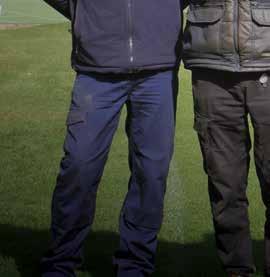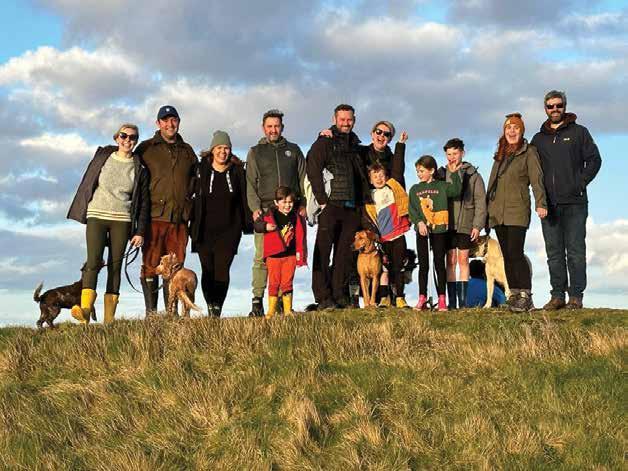
2 minute read
THE TEAM
The Royal Liverpool team comprises twelve full time greenkeepers, a fifty strong artisan group of members (his fairway divot party) and a small posse of six local school kids for weekend course set-up duties. Again, planning is key for this small army, and is no mean feat, but with Bledge’s O.C.D. for planning he modestly makes it look simple!
When The Open comes to town, the team will be bolstered by an additional forty-seven crew, all sourced from local clubs. Bledge was quick to add that he was particularly proud of the competition the club ran to give an opportunity to two greenkeepers who otherwise might not have been able to join the support team. “We did an apprentice competition via Twitter where I asked five greenkeeper-style questions. The two winners won an allexpenses paid opportunity to join our team for the tournament week.”
Royal Liverpool has a state-of-the-art Rainbird irrigation system, with heads covering all the major playing surfaces across the eighteen holes. Despite the water efficiencies the system already provides, the team nonetheless carried out an audit to investigate if there were any further efficiencies that could be made. They soon realised that by introducing a separate head next to each green head, they could save water if only collars required water (instead of setting the greens head to arc more and waste water). At the same time as this instillation was taking place, they took the opportunity to add a hand watering point next to the heads. “Hand watering is an additional water usage efficiency, and the closer hose points help reduce time and effort for the operator,” explained Bledge.
The irrigation audit also flagged up the wasteful outer lines of fairway heads. These 360° 700 or 900 series heads have systematically been ‘swapped out’ by 752 series part-circle fairway heads. Bledge was quick to praise the mammoth effort his irrigation technician, Peter Lewis, had played in changing all two hundred heads over in the last few months! Worthy of note here too is that the ‘plates’ were different from old to new, and so all the custom yardage information had to be re-done too! Lastly, it was discovered that the heads which help irrigate the maze of turf pathways around the dunes are too large. It is planned to replace these to reduce water arcs, helping to only water the five-metre-wide area with what is required (smaller is better sometimes!).
Whilst discussing sustainability, and in particular the use of water and nutrient inputs (which again are modest and only used on an ‘as and when’ required basis), the turf composition across the entire golf course is hard top and sheep’s fescue. These grasses are supported across all playing surfaces (except greens) and are renowned for their drought tolerance and ability to thrive under low nutrient inputs; it’s what all great links courses aspire to.
…And Finally
It just leaves me to thank Bledge, his team and the club for allowing my visit at such a busy time - it was a privilege. The environmental guardianship work they have all completed is impressive and the future sustainability projects are extremely exciting and commendable. The golf course and playing surfaces are looking amazing and I’m sure all our readers will want to wish them all the best for delivery of a successful Open tournament. I hope they enjoy the excitement that it brings and the rest they deserve once the job is done!


Article by Phil Helmn.















